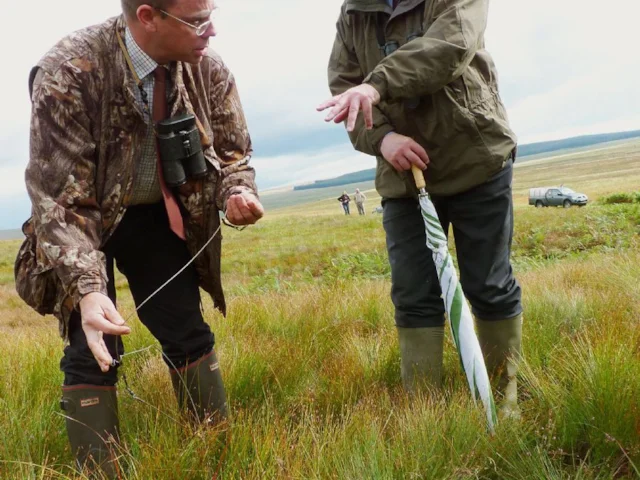Shooting estate helps harriers

A shooting estate in Scotland has joined forces with conservationists to try and find out how to manage moorland for Hen Harrier and Red Grouse.
The Langholm Moor Demonstration Project is a partnership between Buccleuch Estates, Scottish Natural Heritage (SNH), the Game & Wildlife Conservation Trust, the RSPB and Natural England (NE). The aim of the 10-year project – now entering its seventh year – is to demonstrate that moorland management for driven grouse shooting can be achieved in the presence of raptors. The plan has been to restore the shooting to the Langholm Moor and use this investment to help towards meeting the conservation objectives of the site. Shooting estates have been blamed widely for the decline and extinction of Hen Harrier in England.
From the outset the project has chosen to show approaches and techniques of general relevance to upland management across Britain. The project has been visited by several hundred moorland managers, key decision makers and enthusiasts during its six years. There has been strong interest in innovative techniques such as diversionary feeding for the local breeding Hen Harrier population, currently one of the most productive in Britain, and extensive habitat restoration. The project is continuing to look into how and when it will achieve one of the key aims of the project, an economically sustainable harvest of grouse.
Scottish Environment and Climate Change Minister Paul Wheelhouse MSP met project staff and directors last week, before touring part of the moor and viewing examples of the schemes currently underway. He visited to learn about moorland management and its relationship to rural socio-economic activity, and the conservation of both habitat and moorland bird numbers.
He said: “Langholm Moor is an important project in demonstrating how Red Grouse shooting estates can co-exist alongside a healthy raptor population. While the research is still ongoing, it was very encouraging to hear evidence that the diversionary feeding of Hen Harriers has gone so well and I hope we can see this technique being adopted on other grouse moors throughout Scotland, informed by the findings of Langholm.
“It was also of great value to learn more about some of the other important aspects of the project, in particular the extensive habitat restoration, which will benefit a wide range of species, and to hear about the collaborative work of the partner organisations within the Langholm Moor Demonstration Project.”
Work performed by the project includes: Habitat measures including heather burning, bracken control, heather restoration, blanket bog management, livestock management and goat control; control of predators that prey on grouse – numbers of Foxes, Stoats and corvids are being reduced, but no protected species will be killed; disease control – medicated grit is used to combat the nematode worm Trichostrongylus which periodically decimates grouse stocks; diversionary feeding – bought-in food is provided to breeding pairs of Hen Harriers to limit the number of grouse chicks they kill; and the creating of alternative nesting and hunting habitat for Hen Harrier.
The project employs a team of gamekeepers alongside shepherds and ecologists, and all collaborate on the techniques being developed.

